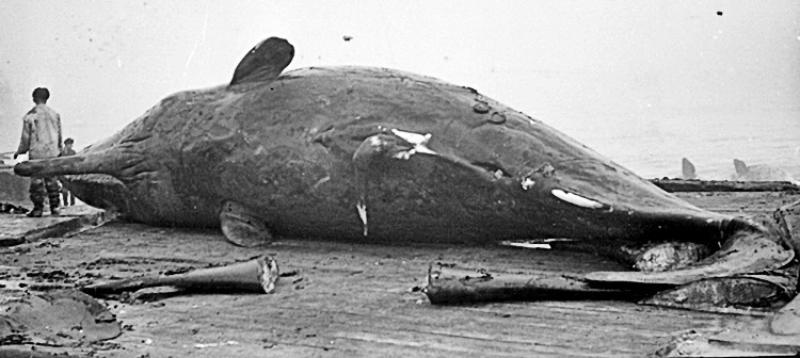To anyone who has ever seen one, the sperm whale (Physeter macrocephalus) is among the more bizarre-looking animals on our planet. With its wrinkled skin, giant head, and large teeth arrayed in an oddly underslung jaw, it looks less like a creation of Planet Earth than something put into the world’s oceans as a prank by extraterrestrials. Yet this remarkable animal has probably been around for longer than any other living cetacean–perhaps as long as 25 million years–and it is superbly adapted to the pelagic ocean environment in which it expands its long lifespan. Sperm whales may well be the deepest-diving of all mammals: they can hold their breath for more than 2 hours in extreme cases, and there is good evidence that they can dive to depths of around 10,000 feet. They are a highly socially evolved species, with strong familial bonds evident in groups that travel, forage, and foster their young together. They are found in all the world’s oceans and travel thousands of miles on their wanderings. None of these characteristics, however, saved sperm whales from human greed.
Scientists with the Center's National Marine Mammal Laboratory (NMML) report on the former U.S.S.R's illegal whaling of this species, which was conducted secretly and on a massive scale, with size limits and other regulations largely ignored. (Japan was also killing large numbers of sperm whales and falsifying data.) With their discovery of formerly secret Soviet whaling industry reports which had not been destroyed but were in Russian public archives containing the true catch data, (unlike the falsified records that were submitted to the International Whaling Commission) NMML scientists are attempting to wring as much information as possible from the illegal whaling data, with the hope that the Soviet bureaucrats’ obsession with detail can now be put to use in the service of a better understanding of how to conserve this remarkable species.



